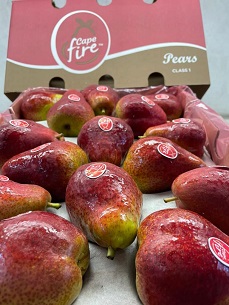
Droplets of bacterial ooze appear on the surface. The bacteria also can invade fruit, which becomes water soaked. Active blight cankers are characterized by an amber or brown exudate on their surfaces or on the bark below.

They often begin at the bases of blighted spurs, shoots, and suckers. This is true of susceptible pears, especially Bartlett, Bosc, and Clapp's Favorite, and certain clonal apple rootstocks, especially M.26 and M.9.Ĭankers, slightly sunken areas of various sizes surrounded by irregular cracks, occur on small to large limbs, trunks, and even roots. Suckers at the base of trees often are invaded and can blight back to the trunk or rootstock, causing the loss of the entire tree in one season. Infected branches can be girdled, resulting in loss of the entire branch. Inside these droplets are millions of bacteria, which can cause new infections.įire blight bacteria can move from blighted spurs and shoots into larger limbs and tree trunks. Pearly or amber-colored droplets of bacterial ooze are often present on diseased blossoms, fruit, and leaf stems, on succulent shoot stems, and on the exterior of infected fruits. A characteristic symptom of shoot blight is the bending of terminal growth into the shape of a shepherd's crook. The leaves wilt rapidly, turn dark, and remain attached, as in the case of spur blight. This infection might occur at any time during the season while the shoots are still growing and when environmental conditions are most favorable for the disease. Shoot blight begins with the infection of the young, succulent growing tip, which turns brown to black. Some remain even after normal leaf fall.įire blight's two main symptoms are shoot blight and cankers on limbs. The blighted leaves remain attached for much, if not all, of the growing season. The leaves wilt, turning brown on apple and quince, and dark brown to black on pear. Bacteria might move through the pedicel to the fruit spur and out into the leaves, where they follow the midrib and main veins, which soon darken.


Infected blossoms wilt rapidly and turn light to dark brown. The disease gains entry to the tree through two main points-blossoms and new shoots-and often appears first in the spring as blossom, fruit spur, and new shoot blight. It can be distinguished from other disorders by droplets of red-brown, sticky, liquid, bacterial ooze that seeps from the surfaces of infected tissue. Susceptible varieties include Gala, Ginger Gold, Idared Jonathan, Rome Beauty, and Yellow Transparent.įire blight kills fruit-bearing spurs, branches, and entire trees. Certain varieties of apple are more susceptible than others. In fruit trees, the disease can kill blossoms, fruit, shoots, limbs, and tree trunks. Fire blight also occurs frequently on pyracantha, spirea, hawthorn, and mountain ash. Caused by the bacterium Erwinia amylovora, the disease can attack some 75 species of plants of the rose family.


 0 kommentar(er)
0 kommentar(er)
